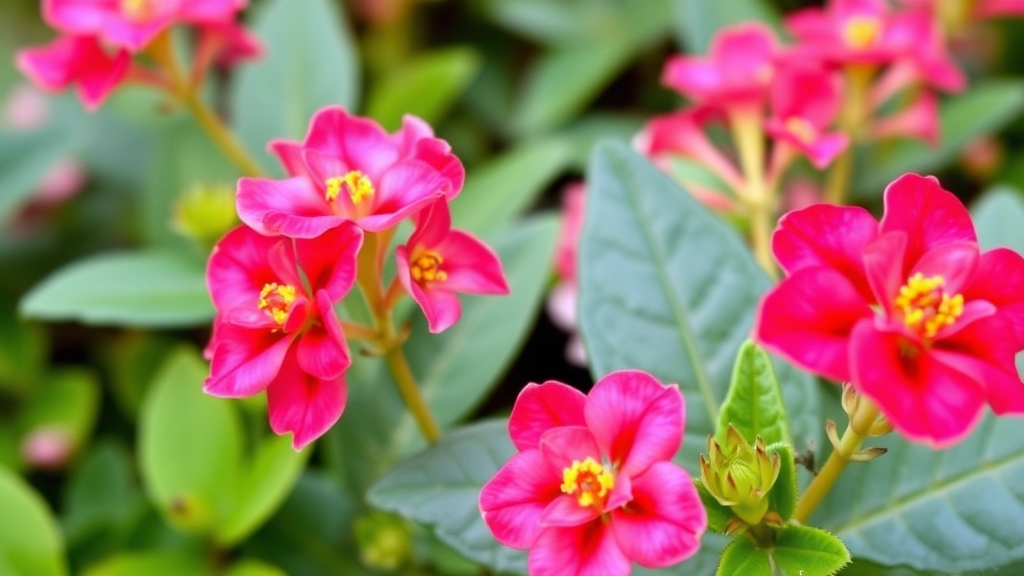Kalanchoe Flowering Season in India
The Kalanchoe flowering season in India is a vibrant spectacle that every plant enthusiast looks forward to. Typically, these hardy succulents bloom during the cooler months, from late autumn to early spring. The ideal climate conditions for Kalanchoe to flourish include moderate temperatures and ample sunlight, making the Indian winter perfect for their blooming.
Care Tips for Kalanchoe
To ensure your Kalanchoe plants thrive, it’s essential to provide the right care. They prefer bright, indirect light and well-draining soil. Watering should be moderate, allowing the soil to dry out between waterings to prevent root rot. With the right conditions, you can enjoy a prolonged blooming season and even encourage reblooming with proper pruning and fertilization.
In India, the best time for Kalanchoe blooming typically falls between late winter and early spring, specifically from January to April. This period aligns with the cooler temperatures and increased daylight, creating ideal conditions for flowering.
Key Factors Influencing Bloom Time:
– **Temperature**: Kalanchoe thrives in temperatures ranging from 15°C to 25°C.
– **Day Length**: Shorter days encourage blooming, making winter months particularly suitable.
– **Humidity**: Moderate humidity levels support healthy growth and flowering.
If you want to maximise the blooming potential of your Kalanchoe, consider these factors carefully. For more detailed tips on encouraging blooms, you might find this [Kalanchoe flowering season guide](https://planthq.org/kalanchoe-flowering-season-blooming-tips-and-care-guide/) helpful. Additionally, understanding the [top flowering Kalanchoe species](https://planthq.org/top-flowering-kalanchoe-species-and-care-tips/) can provide more insights into achieving vibrant blooms.
Climate Conditions Required for Flowering
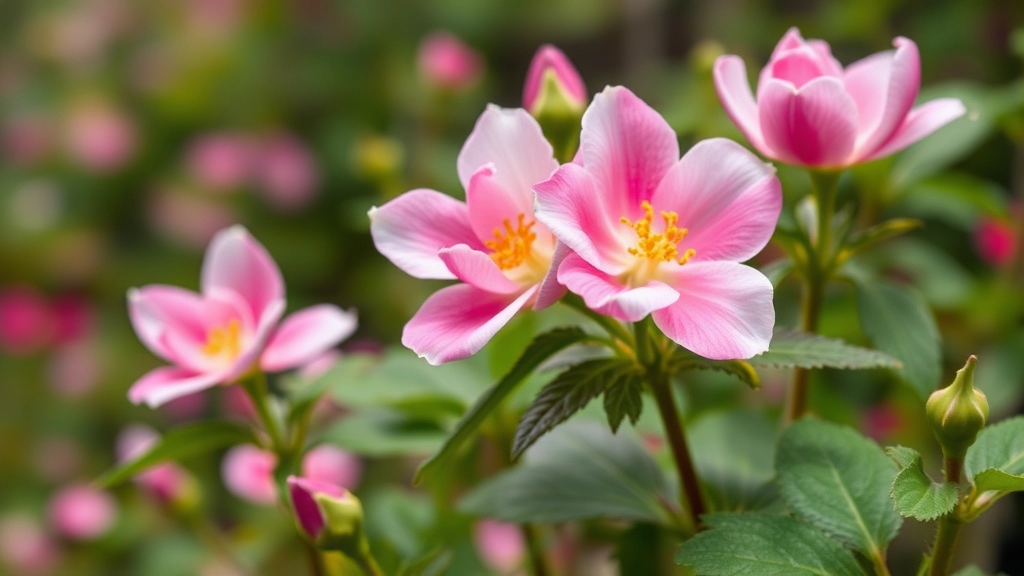
So, you’re eager to see your Kalanchoe bloom beautifully in India, right?
Let’s talk about the climate conditions that can make or break your plant’s flowering success.
Ideal Temperature Range
Kalanchoe thrives in warmer climates.
- Daytime Temperatures: Aim for 20°C to 30°C (68°F to 86°F).
- Nighttime Temperatures: Keep it around 15°C to 18°C (59°F to 64°F).
Too cold, and your plant might just sulk.
Humidity Levels
Kalanchoe doesn’t need high humidity.
- Ideal Humidity: Around 40% to 60% is perfect.
- Tip: If your home is too humid, consider using a dehumidifier.
Seasonal Considerations
In India, the best blooming season usually falls between late winter and early spring.
- Flowering Period: Typically from January to March.
This is when the plant gets just the right mix of warmth and light.
Rainfall and Watering
Kalanchoe is sensitive to overwatering, especially during the rainy season.
- Watering Tip: Ensure good drainage in pots to prevent root rot.
A little rain is fine, but too much can spell trouble.
Wind and Airflow
Good airflow helps prevent diseases.
- Placement: Keep your Kalanchoe in a spot where it can get some breeze but isn’t exposed to harsh winds.
When cultivating Kalanchoe in India, understanding the light and temperature preferences is crucial for ensuring vibrant blooms. Many gardeners often wonder, “How much light does my Kalanchoe need?” or “What temperature is ideal for flowering?” Let’s delve into these essential factors.
### Light Requirements
Kalanchoe thrives in bright, indirect sunlight. Here are some key points to consider:
– **Direct Sunlight:** A few hours of morning sun can be beneficial, but too much direct sunlight, especially in the afternoon, can scorch the leaves.
– **Filtered Light:** Placing your Kalanchoe near a window with sheer curtains can provide the perfect balance of light.
– **Indoor vs. Outdoor:** If grown indoors, ensure they are near a south-facing window. For outdoor gardens, a spot with partial shade during the hottest parts of the day works wonders.
### Temperature Preferences
Temperature plays a significant role in Kalanchoe’s blooming cycle. Here’s what you need to know:
– **Ideal Range:** Kalanchoe flourishes in temperatures between 15°C to 25°C (59°F to 77°F).
– **Nighttime Temperatures:** A slight drop at night can encourage blooming, but temperatures should not fall below 10°C (50°F).
– **Heat Sensitivity:** In hotter regions, ensure adequate ventilation to prevent heat stress, which can hinder flowering.
For those looking to delve deeper into the care of specific Kalanchoe varieties, the [ultimate guide to Christmas Kalanchoe care](https://planthq.org/ultimate-guide-to-christmas-kalanchoe-care-tips/) offers comprehensive tips. Additionally, if you are curious about how to propagate your plants, the [step-by-step guide to propagating Kalanchoe from leaves](https://planthq.org/how-to-propagate-kalanchoe-from-leaves-successfully/) provides valuable insights.
How to Promote Reblooming After the Initial Flowering Period
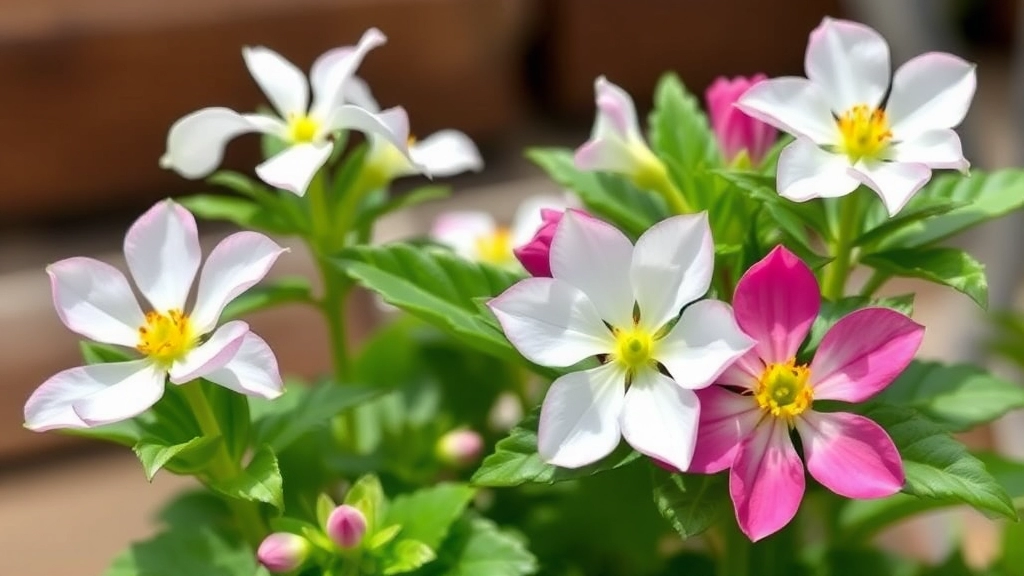
Once your Kalanchoe has dazzled you with its vibrant blooms, you might wonder how to encourage it to flower again. Many gardeners face this challenge, but with the right approach, you can enjoy multiple blooming cycles.
Key Strategies for Reblooming
- Deadheading
- Remove spent flowers regularly.
- This encourages the plant to focus its energy on producing new buds.
- Adjusting Light Exposure
- After the initial blooming period, shift your Kalanchoe to a location with bright, indirect sunlight.
- This helps mimic the natural conditions that stimulate flowering.
- Temperature Control
- Maintain a temperature range of 15-20°C during the night.
- Cooler nights can trigger the plant’s blooming response.
- Watering Practices
- Allow the soil to dry out between waterings.
- Overwatering can hinder reblooming, so be mindful of moisture levels.
- Fertilisation
- Use a balanced fertiliser every 4-6 weeks.
- A high phosphorus formula can promote blooming.
- Pruning
- After the blooming period, prune back the stems.
- This encourages bushier growth and more flowers in the next cycle.
- Rest Period
- Allow your Kalanchoe a rest period of about 6 weeks.
- During this time, reduce watering and stop fertilising to give the plant a chance to recuperate.
By following these steps, you can significantly increase the chances of your Kalanchoe blooming again.
During the blooming season, it’s essential to follow proper watering practices to ensure vibrant Kalanchoe flowers. For a comprehensive understanding of how to care for your Kalanchoe after blooming, refer to our [care tips for Kalanchoe after blooming](https://planthq.org/care-tips-for-kalanchoe-after-blooming/). Additionally, if you’re growing Kalanchoe in a specific climate, such as Texas, you might find our [Kalanchoe care tips for thriving in Texas climate](https://planthq.org/kalanchoe-care-tips-for-thriving-in-texas-climate/) particularly useful. By adhering to these watering guidelines, you can foster a healthy environment for your Kalanchoe to bloom beautifully.
VI. Pruning Techniques to Enhance Flower Production
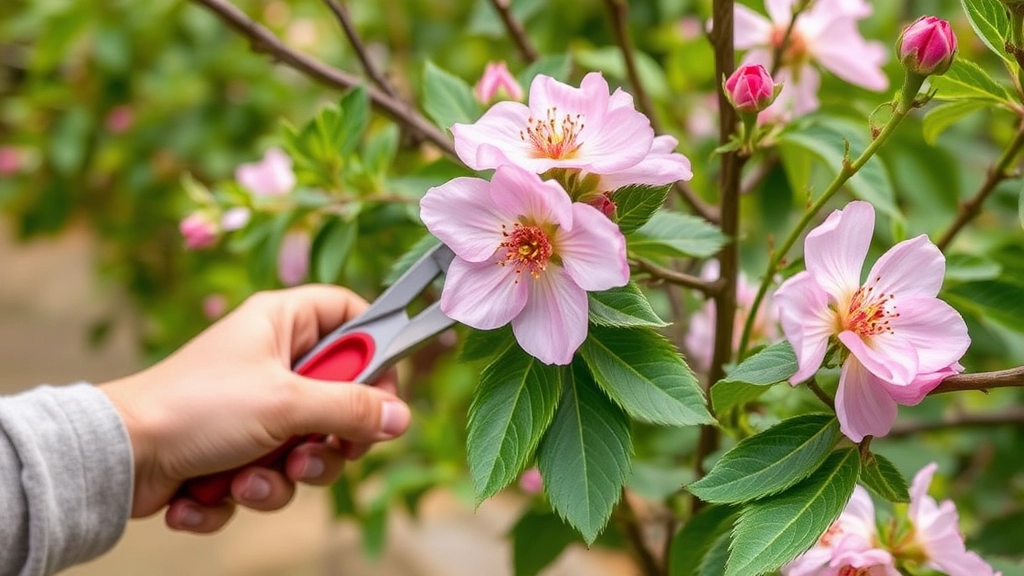
So, you’ve enjoyed the vibrant blooms of your Kalanchoe, but now you’re wondering how to keep that flower power going. Pruning is the secret sauce to encourage more blooms and maintain a healthy plant.
Why Prune?
Pruning isn’t just about cutting back; it’s about giving your Kalanchoe the best chance to thrive. Here’s why it matters:
- Encourages New Growth: Snipping off old flowers can stimulate your plant to produce fresh ones.
- Prevents Disease: Removing dead or yellowing leaves keeps your plant healthy and less prone to pests.
- Shapes the Plant: A little trim here and there can help your Kalanchoe maintain a lovely shape.
When to Prune?
Timing is everything! Here’s when to grab those scissors:
- After Flowering: Wait until the blooms have faded before you start pruning. This is usually in late spring or early summer.
- Regular Maintenance: A light trim every few months keeps your plant in check.
How to Prune?
Here’s a simple step-by-step guide to get you started:
- Gather Your Tools: You’ll need clean, sharp scissors or pruning shears.
- Identify What to Cut:
- Remove spent flowers (the flower stems).
- Trim back any leggy growth or yellow leaves.
- Make Clean Cuts: Cut just above a leaf node to encourage new growth.
- Don’t Overdo It: Aim to remove about 25% of the plant at a time to avoid stressing it.
Pro Tip: If you’re feeling adventurous, try propagating the cuttings! Just pop them in soil, and you might end up with new plants.
Pruning not only keeps your Kalanchoe looking fabulous but also prepares it for the next blooming season.
Types of Kalanchoe Suitable for Indian Gardens
Choosing the right type of Kalanchoe for your garden can make all the difference in achieving a vibrant and flourishing display. Many gardeners wonder which varieties thrive best in the diverse climates of India.
Here are some popular types of Kalanchoe that are well-suited for Indian gardens:
1. Kalanchoe Blossfeldiana
- Known for its stunning clusters of flowers.
- Blooms in a variety of colours, including red, pink, and yellow.
- Thrives in bright light and can withstand warmer temperatures.
2. Kalanchoe Tomentosa (Panda Plant)
- Features fuzzy, grey-green leaves with distinctive brown edges.
- Produces small, tubular flowers that attract pollinators.
- Prefers well-drained soil and can tolerate drought conditions.
3. Kalanchoe Pinnata (Air Plant)
- Recognised for its medicinal properties.
- Grows tall and can reach a height of 3 feet.
- Produces small, yellow flowers and can adapt to various soil types.
4. Kalanchoe Luciae (Flapjack Plant)
- Known for its striking, flat, paddle-like leaves.
- Displays beautiful red edges when exposed to sunlight.
- Requires minimal watering and is ideal for xeriscaping.
5. Kalanchoe Thyrsiflora
- Features large, fleshy leaves that form rosettes.
- Produces tall flower spikes with small yellow blooms.
- Thrives in full sun and is drought-resistant.
When selecting Kalanchoe varieties, consider factors such as sunlight, soil drainage, and temperature preferences. Each type offers unique aesthetics and care requirements, making it essential to choose based on your specific garden conditions.
For more detailed information on Kalanchoe care, check out our Essential Kalanchoe Care Tips for Summer Success and our guide to different Kalanchoe species for your garden.
Common Pests and Diseases Affecting Flowering
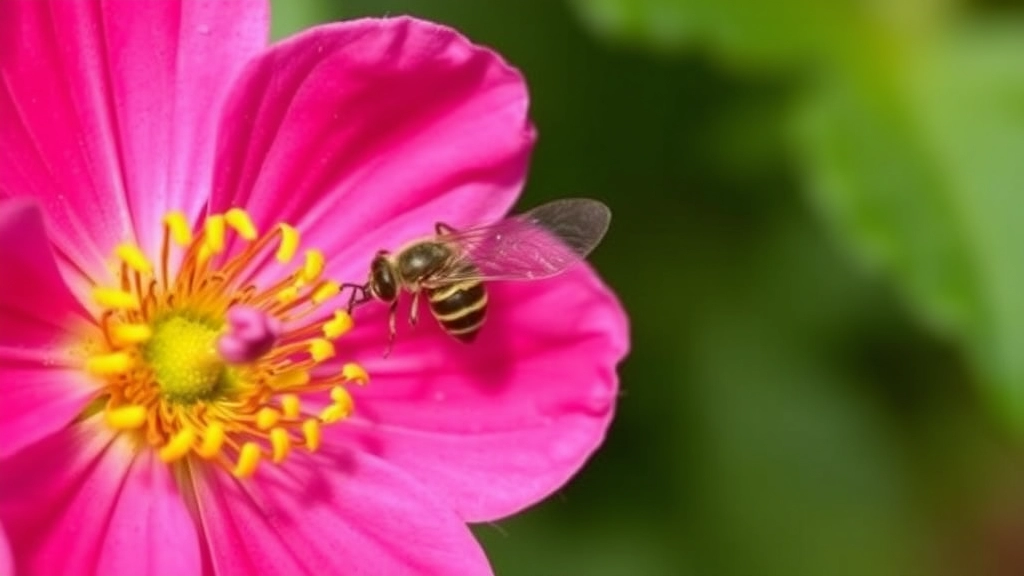
So, you’ve got your Kalanchoe blooming beautifully, but wait—what’s that? Pests and diseases can sneak in and ruin all your hard work. It’s a real worry for many gardeners, and I totally get it.
Common Pests
- Aphids: Tiny green or black bugs that suck the sap from your plant. They can cause leaves to curl and stunt growth.
- Mealybugs: These little white, cotton-like pests love to hide in the leaf axils. They can cause yellowing leaves and weak growth.
- Spider Mites: These are more common in dry conditions. Look for tiny webs and speckled leaves. They can really sap the life out of your Kalanchoe.
- Thrips: These slender insects can cause damage by feeding on the flowers and leaves, leading to discolouration.
Common Diseases
- Powdery Mildew: This fungal disease shows up as a white powder on leaves. It thrives in humid conditions, so keep an eye out!
- Root Rot: Overwatering can lead to this nasty disease. Yellowing leaves and a mushy stem are telltale signs.
- Leaf Spot: Dark spots on leaves can indicate a fungal infection. It usually happens if the leaves stay wet for too long.
Prevention and Treatment
- Regular Checks: Inspect your plants weekly. Catching issues early can save your blooms.
- Neem Oil: This natural pesticide works wonders against pests like aphids and mealybugs. Just spray it on affected areas.
- Proper Watering: Avoid overwatering to prevent root rot. Make sure your pot has good drainage.
- Good Air Circulation: Space out your plants to improve airflow and reduce humidity, which helps prevent diseases like powdery mildew.
Fertilization Tips for Prolonged Blooming
As we explore how to ensure your Kalanchoe continues to flourish, fertilization plays a crucial role in maintaining vibrant blooms.
Understanding Fertilization Needs
Kalanchoe plants thrive with the right nutrients, and proper fertilization can significantly enhance their flowering potential. Here are some straightforward guidelines to follow:
- Type of Fertilizer: Use a balanced, water-soluble fertilizer with an N-P-K ratio of 20-20-20. This ensures your plant receives equal parts of nitrogen, phosphorus, and potassium, essential for growth and flowering.
- Frequency: Fertilize every 4-6 weeks during the growing season, typically from spring to early autumn. This regular feeding supports continuous blooming.
- Dilution: Always dilute the fertilizer to half the recommended strength. Over-fertilizing can harm your Kalanchoe, leading to burnt roots and poor flower production.
- Timing: Apply fertilizer during the morning or late afternoon when temperatures are cooler. This helps prevent fertilizer burn.
- Organic Options: If you prefer organic methods, consider using compost or a diluted liquid seaweed solution. These can provide essential nutrients without the risk of chemical buildup.
Signs of Nutrient Deficiency
Keep an eye out for signs that your Kalanchoe may need more nutrients:
- Yellowing leaves
- Stunted growth
- Poor flower production
If you notice these symptoms, it might be time to reassess your fertilization routine. For more detailed care tips, you might find our expert tips for healthy growth helpful. Additionally, understanding the causes and solutions for red leaves can also aid in maintaining your plant’s health.
FAQs on Kalanchoe Flowering Season in India
What climate conditions are ideal for Kalanchoe flowering in India?
Kalanchoe thrives in warmer climates. The ideal daytime temperature should be between 20°C to 30°C (68°F to 86°F) and nighttime temperatures around 15°C to 18°C (59°F to 64°F). Humidity should be kept between 40% to 60%.
When is the best time for Kalanchoe to bloom in India?
The best blooming season for Kalanchoe in India typically falls between late winter and early spring, from January to March. This period provides the right mix of warmth and light for the plant.
How should I water my Kalanchoe, especially during the rainy season?
Kalanchoe is sensitive to overwatering. Ensure good drainage in pots to prevent root rot. A little rain is fine, but too much can be detrimental to the plant.
What are the key strategies to promote reblooming after the initial flowering period?
To encourage reblooming:
- Deadhead spent flowers regularly.
- Adjust light exposure to bright, indirect sunlight.
- Maintain cooler night temperatures (15-20°C).
- Allow the soil to dry out between waterings.
- Use a balanced fertiliser every 4-6 weeks, preferably high in phosphorus.
- Prune back the stems after the blooming period.
- Allow the plant a rest period of about 6 weeks.
Why is pruning important for Kalanchoe?
Pruning encourages new growth, prevents disease, and helps shape the plant. It’s essential to remove spent flowers, trim back leggy growth, and cut just above a leaf node to stimulate new blooms.
When and how should I prune my Kalanchoe?
Prune your Kalanchoe after the blooms have faded, usually in late spring or early summer. Regular maintenance pruning every few months is also beneficial. Use clean, sharp scissors or pruning shears and aim to remove about 25% of the plant at a time.
What are common pests and diseases that affect Kalanchoe flowering?
Common pests include aphids, mealybugs, spider mites, and thrips. Diseases like powdery mildew, root rot, and leaf spot can also affect the plant. Regular checks, proper watering, good air circulation, and using neem oil can help prevent and treat these issues.
How can I prevent and treat common pests and diseases in Kalanchoe?
- Regular Checks: Inspect your plants weekly to catch issues early.
- Neem Oil: Use this natural pesticide against pests like aphids and mealybugs.
- Proper Watering: Avoid overwatering and ensure good drainage to prevent root rot.
- Good Air Circulation: Space out your plants to improve airflow and reduce humidity.
References
-
How to Grow and Care for Kalanchoe Indoors – The Spruce
-
Kalanchoe Care: Tips For Growing Kalanchoe Plants
-
Kalanchoe: How to Grow and Care for Kalanchoe Plants
